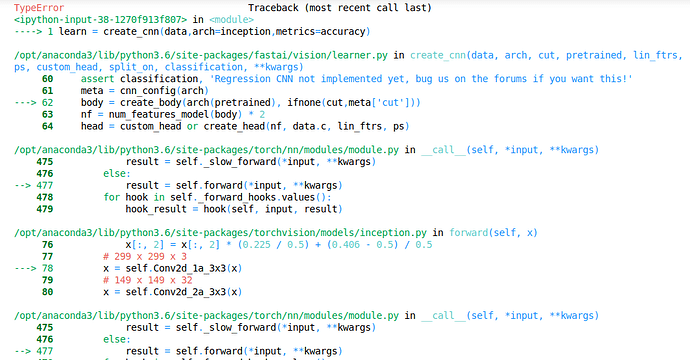I’ve been having problems regarding using custom models with create_cnn.
I am getting this error
I found that in this body = create_body(arch(pretrained), ifnone(cut,meta['cut'])), create_body takes pretrained(bool value) as input here and doesn’t pass a Tensor in this case.
While this method works with resnet (models.resnet18(True)), ResNet defined in models takes only pretrained bool value as input (pretrained=True,**kwargs). it may not be applicable with custom models always. Models usually takes (input,**kwargs)``#input Tensor
What can be the fix ?


